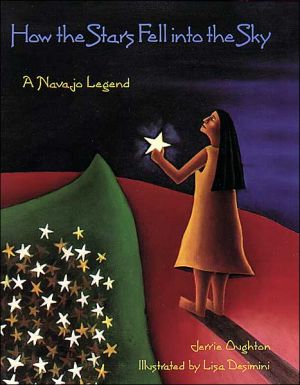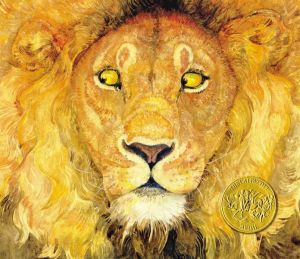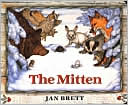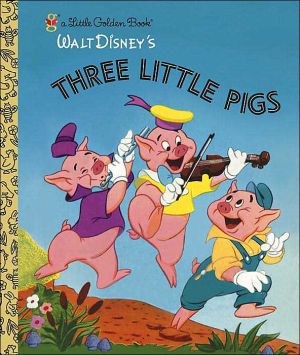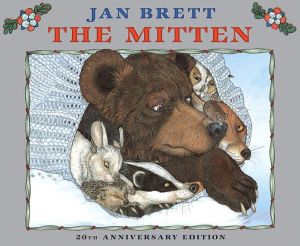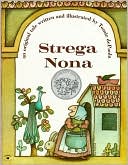How the Stars Fell into the Sky: A Navajo Legend
This retelling of a Navajo folktale explains how First Woman tried to write the laws of the land using stars in the sky, only to be thwarted by the trickster Coyote.\ \ \ A retelling of the Navaho legend that explains the patterns of the stars in the sky.\
Search in google:
This retelling of a Navajo folktale explains how First Woman tried to write the laws of the land using stars in the sky, only to be thwarted by the trickster Coyote.Publishers WeeklyAccording to the Navajos, the jumble of stars in the night sky reflects the disorders and confusion of life itself. In this lyrical retelling Oughton--in her first children's book--paints a picture of calm deliberation as, at the beginning of the world, First Woman determines to write the laws in the sky for all to see. So she positions her jewelry ``crafting her careful mosaic on the blackberry cloth of night.'' Coyote offers to help with this important task but becomes impatient and sends a cascade of stars hurtling into the night, creating chaos for all time. Oughton's text echoes First Woman's self-confidence and is sprinkled throughout with deft turns of phrase. Desimini's somber yet luminous art evokes nature's solemn beauty as it captures the silent mystery of the ``rim of night.'' Her solid, slightly static figures firmly place this fantasy-like world of the desert in reality. Ages 4-8. (Mar.)
\ From the Publisher"Oughton's fine debut provides Desimini with the best vehicle she's had for her spare, powerful style . . . A dramatically handsome setting for an especially noble Native American tale." Kirkus Reviews with Pointers\ \ \ \ \ Publishers Weekly - Publisher's Weekly\ According to the Navajos, the jumble of stars in the night sky reflects the disorders and confusion of life itself. In this lyrical retelling Oughton--in her first children's book--paints a picture of calm deliberation as, at the beginning of the world, First Woman determines to write the laws in the sky for all to see. So she positions her jewelry ``crafting her careful mosaic on the blackberry cloth of night.'' Coyote offers to help with this important task but becomes impatient and sends a cascade of stars hurtling into the night, creating chaos for all time. Oughton's text echoes First Woman's self-confidence and is sprinkled throughout with deft turns of phrase. Desimini's somber yet luminous art evokes nature's solemn beauty as it captures the silent mystery of the ``rim of night.'' Her solid, slightly static figures firmly place this fantasy-like world of the desert in reality. Ages 4-8. Mar.\ \ \ Children's LiteratureIn this retelling of a Navajo legend, First Woman wants to write the laws to help mankind. She patiently takes her jewels the stars and carefully places them in the sky. Coyote arrives and asks if he can help. Impatient with a task that could take forever, he takes First Woman's blanket and tosses the stars into the sky. First Woman is aghast, and mankind never knows the reason why confusion is always present.\ \ \ \ \ School Library JournalK-Gr 3-- At the end of the first day, First Woman tries to convince First Man that ``The people need to know the laws.'' Impatiently, he tells her to write them in the sky. She takes a blanket full of her jewels stars and with infinite patience begins ``designing her pattern so all could read it.'' Coyote asks to help, but when he sees the magnitude of the task he grumbles, then flings the remaining stars into the night sky, forever obscuring the pattern. As the second day dawns, the people go about their lives, ``. . . never knowing the reason for the confusion that would always dwell among them.'' This Navajo tale acknowledges the common human feeling that there IS a message in the stars--the laws of a clear and orderly universe--if it could be read. It absolves humans of guilt Coyote did it and provides a First Woman who is a strong, positive, and beneficent figure. The concise and graceful text is matched with illustrations in a primitive but dramatic vein, marked by simplified shapes, saturated matte colors, and desert-stark composition. The claret-sandstone earth and deep lapis sky, meeting at a curved horizon, dominate most pages; the white of eyes and starlight punctuate the design. This handsome book might well fit into a myth or Native American collection, but it can stand on its own timely and attractive merits as well.-- Patricia Dooley, Univ. of Washington Extension, Seattle\ \
